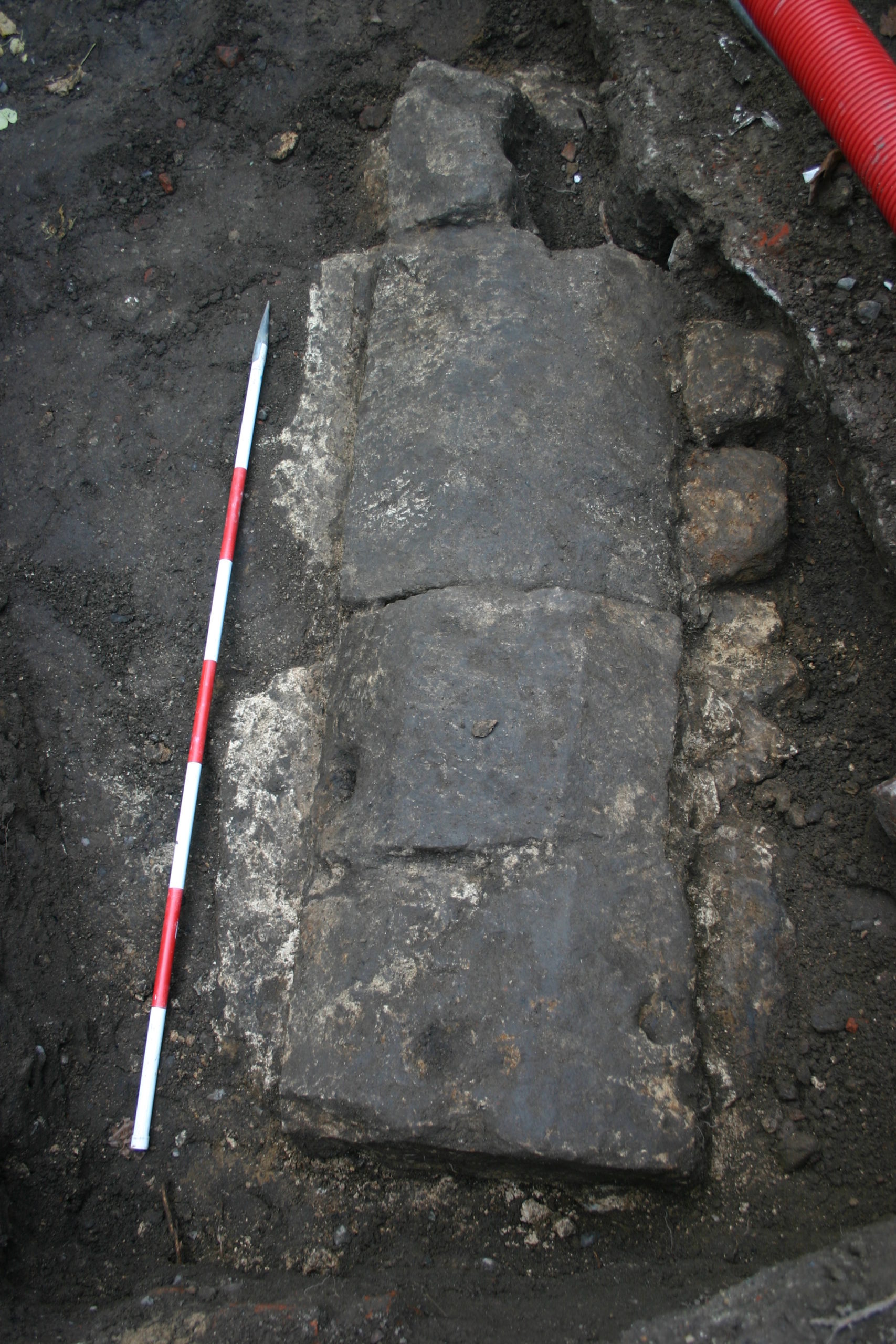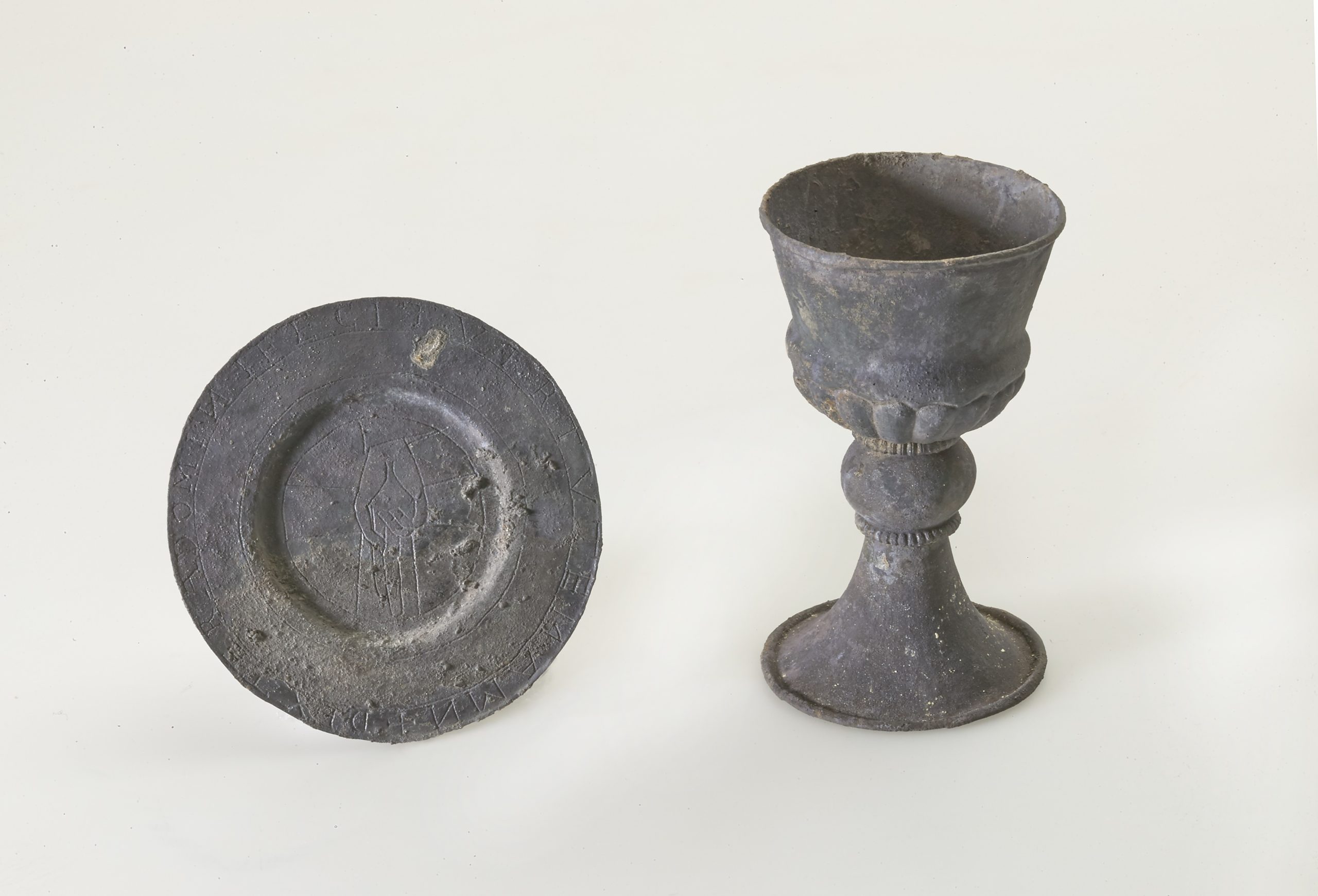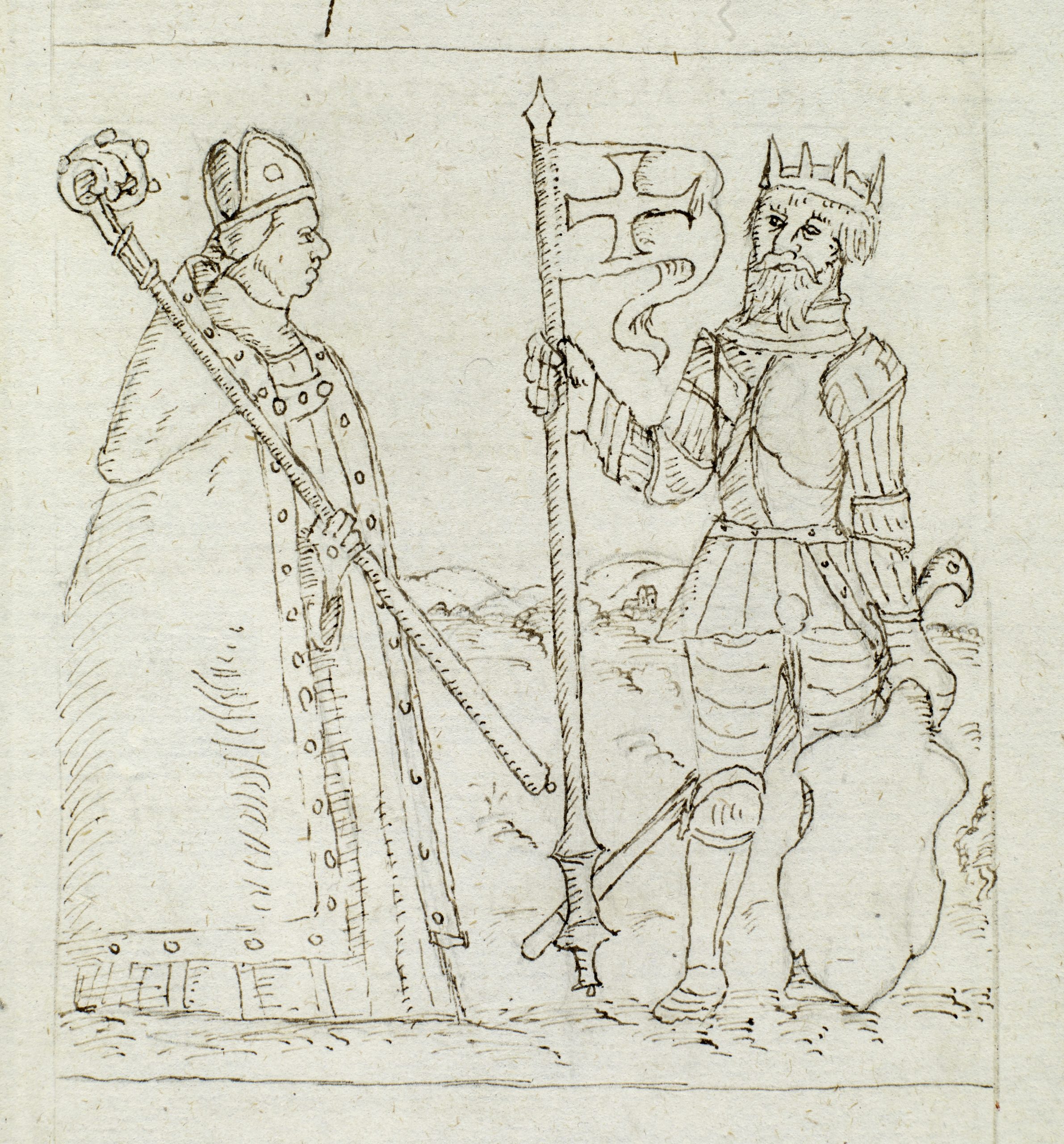The Bishop from St. Alban’s Priory, examines elements of and around the early church institution during the transition between the Viking Age and the Middle Ages. The project takes its starting point from the possibilities and perspectives that arose in September 2015 due to the discovery and excavation of a distinguished 11th Century episcopal tomb containing a holy communion set at the church of St Alban’s Priory in Odense – namely, the church where Canute the Holy was murdered in front of the high altar in 1086.
The project was conducted by employees from Odense City Museums but is, in its basic structure, interdisciplinary and inter-institutional with a focus on both the physical archaeological objects and the early written evidence and accounts of the 11th Century church institution in the centre of power in Odense, as well as in Denmark as a whole.
“… tunc temporis sedes erat episcopalis…” – “… at the time was the bishop’s seat…” – thus reads part of a text stating that the church of St. Alban’s Priory, at the time when King Canute was murdered, was also the bishop’s cathedral. It was composed by a now unknown author and is found on a memorial depicting Canute the Holy’s martyrdom. In 1095 this honour was transferred, together with the body of the holy king and the relics of St. Alban, to the newly built Skt. Knud’s Church (St. Canute’s Church). The fact that the church at St. Alban’s Priory once functioned as a cathedral became lost in time. The recent discovery of the episcopal tomb has now provided concrete proof of the quote’s accuracy and that the church at St. Alban’s Priory was a cathedral in the 11th Century.

The bishop’s sarcophagus was built of travertine ashlars and located in the eastern half of the nave of the wooden church. The stone slabs which formed the lid of the cist were barely visible in the 11th Century church, but the tomb is presumed to have had some kind of marker on the floor. Until dating and analysis of the skeleton (bishop) is available, the holy communion set is the best clue for ascertaining the bishop’s age and identity. Firstly, the episcopal tomb must be from the period when the church of St. Alban’s Priory functioned as a cathedral and therefore predating 1095. After this date, a bishop would most likely have been buried in the crypt of the newly constructed cathedral.

Together with a large number of interdisciplinary scientific studies, the goal, with an archaeological starting point, is to uncover essential elements of the events and processes that shaped the cathedral in the early Christian period, where the Danish church is defined as an institution.
The research project is multi-faceted and, among other things, concentrated on a number of very basic questions regarding the objects and technologies of the burial as well as, of course, accurate dating and, if possible, identification and description of the bishop and his life and death. The answers to these questions are sought in collaboration with the University of Southern Denmark (ADBOU), Heimdal Archaeometry, Niras and Aarhus University.
In addition, there are two other core issues directly related to the local and geopolitical power struggles. What is the bishop’s origin, and which archbishopric and what authority was he most likely connected with?

Is it a very early bishop burial related to Canterbury and thus the Anglo-Saxon church? Is it a German bishop appointed from the archbishopric of Hamburg-Bremen? Or is it a Danish bishop from the period up to the establishment of a Danish/Nordic archbishopric in Lund in 1104? The question is approached primarily through scientific analyses. In collaboration with the Centre for Geogenetics and the National Museum, both DNA analyses and Sr analyses are performed in order to map the bishop’s geographical and genealogical origins. This information is combined with detailed 14C analyses carried out in collaboration with Aarhus University, whereby it is hopefully possible to piece together the bishop’s affiliation prior to taking office in Odense.
Why was the bishop not moved to the newly established cathedral, St. Knud’s, in 1095?
On the basis of the Odense Literature and the archaeological sources, can a plausible explanation be established as to why the bishop was not moved to the new cathedral together with the relics of St. Alban and Canute the Holy in 1095 or in connection with e.g., Canute’s canonization and burial only five years later?
Bjerregaard, M.M., J.T. Christensen & J. Hansen 2016: Bispen i Albani Kirke. Odense Bys Museer 2016, s. 140-155. (pdf)
Bjerregaard, M.M., J.T. Christensen & J. Hansen 2016: Tidlig bispegrav i Odense. Skalk 2016:5, s. 3-9.
Christensen, J.T. & J. Hansen 2017: Graven og manden i domkirken Skt. Albani Odense – en kilder til overleveringen af 1000-tallets bispehistorie. I: M.M. Bjerregaard & M. Runge (red.): At være i centrum. Magt og minde – højstatusbegravelser i udvalgte centre 950-1450, s. 10-27 (pdf)
Bjerregaard, M.M.: Nadversættet fra bisspegraven i Odense Skt. Albani Kirke. I: M.M. Bjerregaard & M. Runge (red.): At være i centrum. Magt og minde – højstatusbegravelser i udvalgte centre 950-1450, s. 28-43 (pdf)